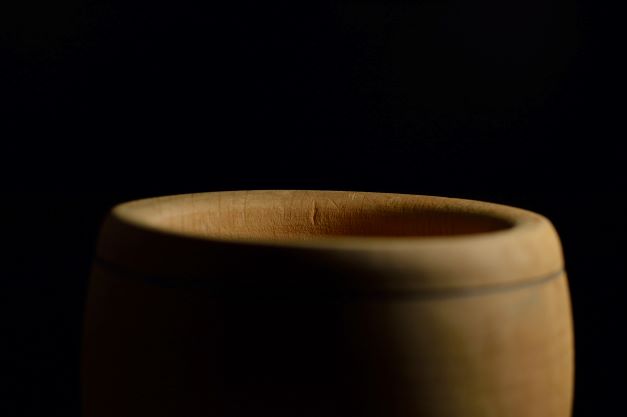Reconstructing the cooking process of people who lived thousands of years ago requires studying both bones and plant remains. But to reconstruct how ingredients were combined and cooked, scientists need to study ancient cooking vessels.
“Fatty molecules and microscopic remains from plants such as starch grains and phytoliths–silica structures deposited in many plant tissues–get embedded into vessels and can survive over long periods,” said Dr. Akshyeta Suryanarayan, a researcher at the Universitat Pompeu Fabra in Barcelona, Spain, and co-author on a new study in the journal Frontiers in Ecology and Evolution.
Ancient cooking vessels
In the new study “Integrating Lipid and Starch Grain Analyses From Pottery Vessels to Explore Prehistoric Foodways in Northern Gujarat, India,” Suryanarayan and co-authors analyzed such leftovers in Copper and Bronze Age vessels, including pots, vases, goblets, jars, and platters – from today’s Gujarat, India.

“Our study is the first to combine starch grain and lipid residue analysis of ancient vessels in South Asia,” said Suryanarayan. “Our results show how the prehistoric people who made these vessels processed different foodstuffs and mixed them together, transforming them into meals.”
The authors sampled 11 4200- to 4000-year-old vessels excavated at Shikarpur, an archeological site from the Bronze Age Indus Valley Civilization that flourished between 2600 and 2000 BCE in today’s Pakistan and northwestern India.
To study the effects of cultural change, they also sampled seventeen 5300- to 4300-year-old vessels from two nearby sites, Datrana and Loteshwar. The latter was made by semi-nomadic farmers and herders, during the Copper Age.
“Our results show that during both the Copper and Bronze Age in northern Gujarat, people acquired their ingredients in a variety of ways: some were foraged locally from the wild, others cultivated or herded, and some were traded in from elsewhere,” said first author Dr. Juan José García-Granero, a researcher from the Spanish National Research Council in Barcelona.
Imported grains
For example, in the vessels from Datrana, 99 percent of the starch grains were from grasses in the tribe Hordeeae, which includes wheat, barley, rye, and their wild relatives. But these aren’t native to Gujarat, which suggests that they were imported from other areas.
The vessels from Loteshwar and Shikarpur contained mainly (67 to 73 percent of starch grains) starch from beans. The researchers also found traces of ginger, which may first have been ground on grinding stones and then used in cooking.
The lipids in the vessels from all three sites were mainly fatty acids typical of degraded animal fats. For the majority (78 percent) of these vessels, the relative abundances of the carbon isotopes 13C to 12C of the fatty acids suggested that this fat was from omnivores, for example, pigs, birds, and rabbits. This was unexpected because animal bones reported from Copper and Bronze Age sites in Gujarat in previous studies have so far mostly been from ruminants: domestic cattle, water buffalo, sheep, goats, wild deer, and nilgai antelope. Yet only in 22 percent of the vessels analyzed here were isotope signatures consistent with ruminant fat. There were no traces of fish or dairy.
No phytoliths were found. Because these occur mainly in inedible plant parts, their absence suggests that seeds and grains were thoroughly cleaned before they were put into the vessels, with the less palatable parts removed.
To their surprise, the authors found no evidence that the profound cultural change from the Copper Age to the Indus Valley Civilization had any impact on how animals and plants were processed before and during cooking.
“Our results suggest that different ingredients were also used in different methods of cooking. The virtual absence of small millets (the staple in prehistoric Gujarat) in the pottery vessels suggests millets were used exclusively for flour-based meals, such bread-like products, whereas other ingredients (such as beans) would also have been used in a wider range of dishes, such as stews,” said García-Granero.
“The combined use of plant microremains and biomolecules of the current study shows the great potential to unravel our understanding of ancient foodways,” said Final Author Prof. Marco Madella from the Universitat Pompeu Fabra. “The next step for the study of footways in South Asia will be to expand the reference material, especially for biomolecule analyses, for a better understanding of the ingredients and the recipes. We are currently expanding our work to cover the transition from the pre-urban to the urban phase of the Indus Valley Civilisation.”




